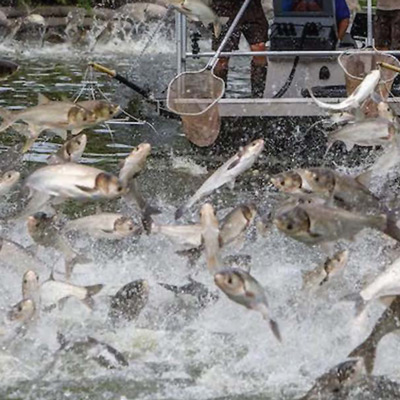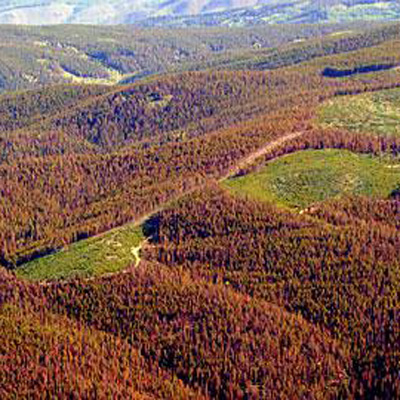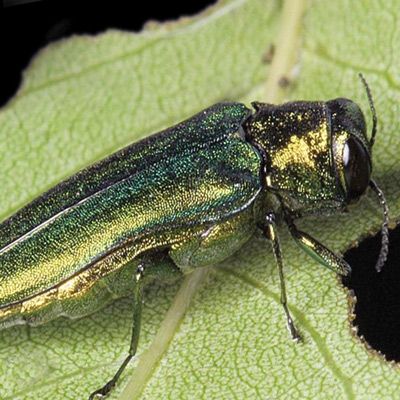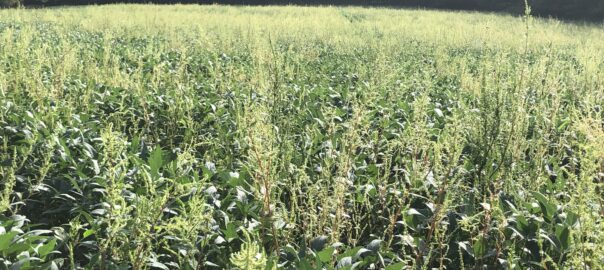Targeted Species

Zebra and Quagga Mussels
Zebra and Quagga Mussels are destroying ecosystems in the Great Lakes, Upper Mississippi River Basin and Lower Colorado River Basin and significantly impacting all lake related water, power, natural resources and infrastructure as they continue to spread south and west. They have also caused similar extensive damage across Europe.
Current Status of a Solution
The Invasive Species Corporation’s (ISC) Zequanox product is currently being marketed for pipeline and open water applications. We have begun the development of a second generation product, one that will be significantly cheaper, significantly easier to use and significantly more efficacious in both open water and closed pipe system applications. We believe we can have this new generation of our product completed within six months but a new registration of this generation with the EPA will take approximately two years.

Asian Carp
Asian Carp are destroying freshwater fisheries and tourism along the entire Mississippi River, its tributaries, and most nearby lakes. They may soon penetrate the Great Lakes waters and beyond.
Current Status of a Solution
The Invasive Species Corporation’s (ISC) Piscamycin solution needs some manufacturing process improvements, then it must be re-registered with the EPA. However we believe it may qualify for emergency use registration with the EPA and therefore be received within six months. We are hopeful this work can be completed in 2023. We are currently working on the start-up of manufacturing and beginning the marketing of the product for open water and pipe applications. We recently signed a CRADA with the USGS to jointly work on these manufacturing improvements and to make the solution bait specific to only certain species of carp. We may target other invasive species of fish and work to make it bait specific to them also, making it a much broader environmental control tool in the US and eventually the world.

Toxic Algae
Toxic Algae is poisoning wildlife, pets and humans, and destroying freshwater ecosystems as it spreads domestically and internationally. Climate change is making this a much bigger and more prevalent problem all over the world.
Current Status of a Solution
We have discovered five candidate microbes that could potential be suitable algaecides. They require further research, proof-of-concept, toxicology, registration, manufacturing process improvement and finally marketing. We are currently negotiating a license with the owner of those microbes.

Pine Bark Beetle
Warming temperatures and droughts are fueling the expansion of pine, mountain and spruce beetle outbreaks across North America, Europe, and Siberia, ravaging tens of thousands of square miles of woodlands. Scientists warn that some forest ecosystems may never recover. 1
Current Status of a Solution
We have identified two candidate microbes and are negotiating a license to develop those microbes as a solution for these specific beetles and, we hope, on a broad number of the over 600 bark beetles and other forest pests. Further testing on a broad number of pests and development of application methodology is required before going forward with commercialization and deployment. Once efficacy has been shown we will simultaneously work on manufacturing and application methodology. Effective and economical forestry application is a significant challenge.

Emerald Ash Borer & Gold Spotted Borer & Others
The Emerald Ash Borer is destroying ash trees across eastern and midwestern USA and Canada, continuing its march westward. As with many of the bark and borer beetles, the Emerald Ash Borer’s territory is expanding due to Global warming. These pests are destroying eco systems, contributing to forest fires and causing billions in damage to the forestry and paper industries. But there are other just as serious borers/pests causing similar destruction such as the Gold spotted oak borer (GSOB), Invasive shot hole borer (ISHB) (polyphagous and kuroshio), Mediterranean oak borer (MOB) and the Hemlock wooly adelgid (HWA).
Current Status of a Solution
We have identified two candidate microbes and are working on a license to develop them for forestry applications. Further testing on a broad number of borer/forest pests and application methodology is required before going forward with commercialization and deployment. Once efficacy on a number of target pests has been shown we will simultaneously work on manufacturing, application methodology and registration. Effective and economical forestry application is a significant challenge we must overcome. In addition, different microbes may need to be discovered, tested and field tested to address these terrible pests.

Aquatic and Terrestrial Weeds
In the US alone, invasive weed damage costs exceed $30B/year and cover 100,000M acres – about the size of California. Weeds have evolved to be resistant to 21 of the 31 known herbicide sites of action. The global herbicide market is $43B/year.
Current Status of a Solution
Invasive and herbicide resistant weeds have become a huge and increasingly concerning problem. Our goal is to develop a new environmentally friendly and sustainable herbicide. Yet, a new herbicide mode of action has not been developed in 40 years. We intend to use an AI assisted discovery process to discover a microbe that produces herbicidal compounds. We will then use genomics and synthetic biology to optimize those herbicidal compounds and to enhance their efficacy. We intend to develop the first cost effective organic herbicide and to dramatically reduce the cost of global organic food production and to drive further conversion of organic and regenerative acres. We also intend to develop a granulated formulation that could be spread in open water applications to address the increasing problem of aquatic invasive weeds in our waterways. This project is at the very beginning with setting up discovery therefore it is likely to take four years to get a new herbicide on the market and doing good in the world.